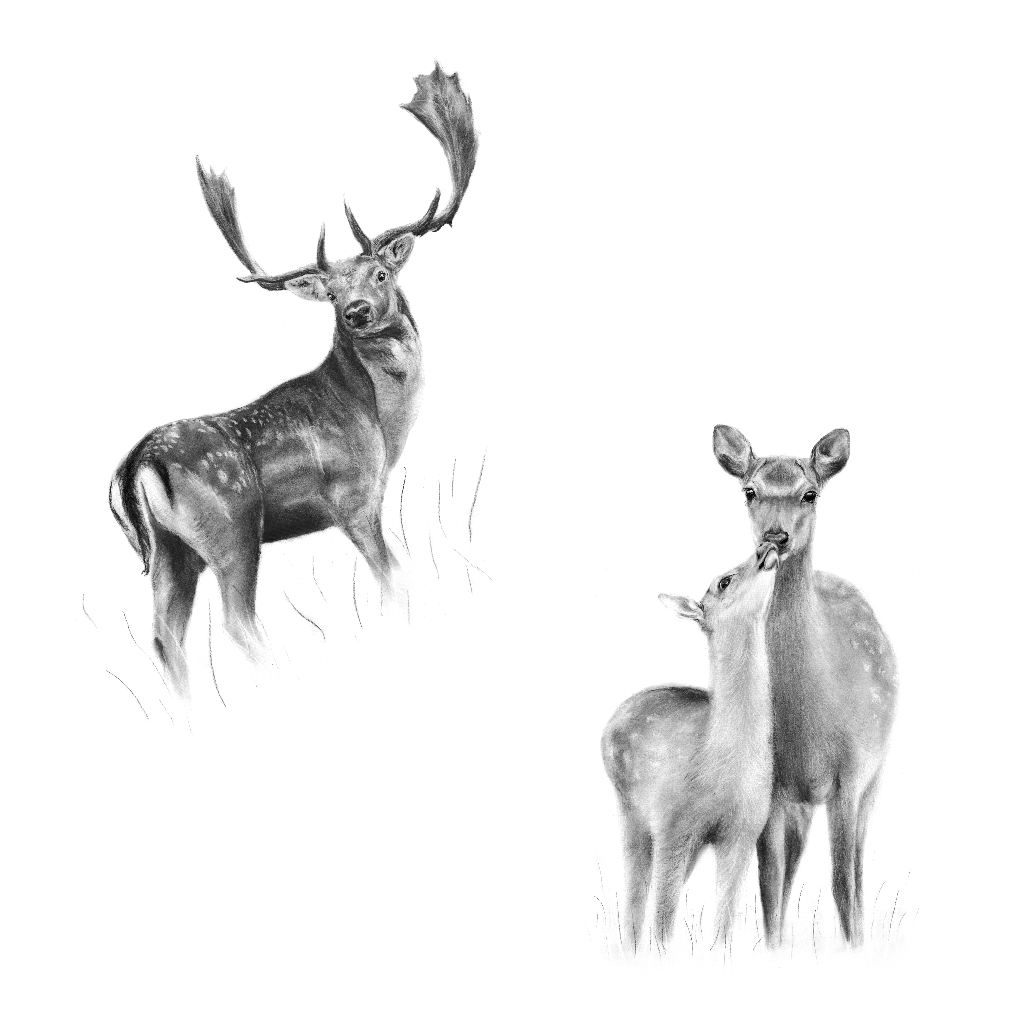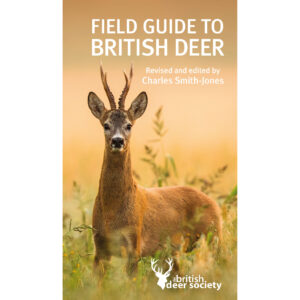Climate Change and Its Impact on UK Deer Species
Share article:
Article by:
Insights from Recent Research, Science and Research, British Deer Society
Climate Change and Its Impact on UK Deer Species: Insights from Recent Research
Recent research published in Global Change Biology, led by Annika Felton and Hilde Karine Wam, offers crucial insights into how climate change is affecting deer populations.
Scientists studied 20 years of research on 10 key deer species in boreal and temperate regions, including moose, roe deer, and red deer. They analysed 218 articles to summarise how climate change affects these animals’ physical traits, behaviour, and population trends.
|
Characteristic |
Boreal Regions (Taiga) |
Temperate Regions |
|
Location |
High northern latitudes, south of the Arctic Circle. Found in Canada, Russia, Scandinavia, Alaska. |
Between 30° and 60° latitude. Found in parts of North America, Europe, Asia, and southern South America. |
|
Climate |
Long, cold winters and short, mild summers. Moderate precipitation, often with heavy snowfall. |
Distinct seasons: cold winters, warm summers, moderate rainfall. |
|
Vegetation |
Dominated by coniferous forests (spruce, pine, fir), with mosses and lichens on the forest floor. |
Deciduous trees (oaks, maples, beeches), mixed forests, and grasslands. |
|
Key Wildlife |
Moose, wolves, bears, migratory birds. |
Deer, foxes, rabbits, diverse bird species. |
|
Growing Season |
Short growing season due to the cold climate. |
Longer growing season with more diverse plant life. |
|
Role in Ecosystem |
Major carbon sink, helps regulate global temperatures. |
High biodiversity and significant agricultural productivity. |
With the UK’s climate already shifting towards warmer winters and hotter summers, understanding how deer species adapt to these changes is key to their management and conservation. The study’s findings, have important implications for the UK, where deer populations are expanding, and their impact on both ecosystems and human activity is becoming more pronounced.
Deer Physiology and Climate Adaptation
Deer species, including native ones like red deer and roe deer, are very good at adjusting to changes in their environment. They can change their behaviour, physical features, and body functions to cope with new conditions. The review highlights how climate variables like temperature, rainfall, and snow can significantly affect deer physiology and population dynamics. Warmer winters, for instance, are generally beneficial to deer, reducing mortality caused by cold stress and providing easier access to food. However, the flip side is that hotter, drier summers may push the physiological tolerances of some species beyond their limits.
For UK deer, this could mean a shift in population trends. Warmer winters might lead to higher survival rates, potentially increasing deer numbers. However, heat stress during increasingly hotter summers could have negative effects, particularly on reproductive success and body condition. Roe deer, for example, are particularly sensitive to warmer spring and summer conditions, which could exacerbate density-dependent factors like competition for resources.
Behavioural Changes in Response to Climate
The research points to deer exhibiting behavioural flexibility to cope with environmental stresses. Deer in warmer climates may change their habitat selection, favouring shaded or wetter areas to avoid heat stress. In the UK, where summer temperatures are expected to rise and extreme weather events such as droughts become more frequent, we may see deer shifting their range or activity patterns to cooler areas, such as upland regions or forests with dense canopy cover.
Migration and movement patterns may also change. Although the UK’s deer populations tend to remain within regular ranges, some species, such as red and fallow deer, can undertake seasonal movements. Changes in temperature and food availability could alter these patterns, potentially leading to greater deer-human interactions as they seek out new habitats.
Population Dynamics and Ecosystem Impacts
One of the most striking findings from the review is the potential for climate change to alter deer population dynamics through delayed effects. For example, changes in forage availability due to altered rainfall patterns could have cascading effects on deer populations. In the UK, which already faces challenges with high deer densities in some areas, warmer springs could lead to increased competition for food, affecting body condition and, ultimately, reproduction rates.
This has significant implications for both deer management and forestry. With milder winters and prolonged growing seasons, deer populations could expand, increasing the pressure on woodland ecosystems through browsing. This could hinder forest regeneration, a key concern in UK reforestation efforts. At the same time, the biological fitness of deer populations—their ability to survive and reproduce—may decline due to heat stress and reduced forage quality during dry summers. This could potentially lead to more conflicts between different land management interests.
Knowledge Gaps and Future Research for the UK
The review also identifies several knowledge gaps that are particularly relevant to UK deer management. One major gap is the lack of research on how more extreme weather events, such as heatwaves and heavy rainfall, might affect deer. The UK has experienced increasingly unpredictable weather patterns, and understanding how these extreme events will influence deer behaviour, reproduction, and mortality is crucial.
Another gap is the need for more studies on the indirect effects of climate change, such as the impact of changing rainfall patterns on forage quality. In the UK, where many deer species thrive on agricultural land or managed forests, changes in the availability and quality of food could significantly affect their populations. There is also a need for more research on how habitat features like wetlands might serve as thermal refuges for deer during periods of extreme heat.
What This Means for UK Deer Management
The research underscores the importance of considering local factors when managing deer populations in a changing climate. In the UK, where deer populations are already high, the effects of climate change could exacerbate existing management challenges. For instance, higher deer densities could lead to more severe browsing pressure on forests and agricultural land, while heat stress and reduced forage quality might lower the fitness of deer populations.
To address these challenges, UK land managers will need to incorporate climate projections into their deer management strategies. This could include safeguarding habitats that provide shade or water, monitoring deer populations more closely for signs of stress or behavioural changes, and adjusting culling strategies to account for climate-driven changes in population dynamics.
In conclusion, while UK deer populations may benefit from warmer winters, the long-term effects of climate change, particularly hotter summers and increased climate variability, could pose significant challenges. By taking a proactive approach and addressing the knowledge gaps identified in this research, the UK can better prepare for the future and ensure that both deer and the ecosystems they inhabit remain resilient in the face of a changing climate.
The Role of the British Deer Society
At the British Deer Society (BDS), we are committed to promoting deer conservation and management practices that reflect the challenges of our time. The results of this study remind us that deer populations are not immune to the effects of climate change, and proactive measures will be necessary to maintain healthy and sustainable deer populations across the UK.
By working closely with researchers, landowners, and policymakers we can ensure that UK deer species are able to adapt to environmental changes. Our initiatives, such as the real-time deer distribution mapping project and training programmes, are designed to provide the tools and information needed to manage deer populations effectively in the face of a changing climate.
Conclusion
Climate change is not a distant threat— it is already reshaping ecosystems across the UK, and deer species are not immune to its effects. This latest research offers valuable insights into how deer physiology, populations, and distributions will be affected, and it highlights the need for careful management to preserve these iconic species.
As we look to the future, the British Deer Society will continue to champion sustainable deer conservation efforts, ensuring that our landscapes and wildlife remain resilient in the face of environmental challenges.
Together, we can help safeguard the future of UK deer.
References:
“Climate change and deer in boreal and temperate regions: From physiology to population dynamics and species distributions.” Global Change Biology, 2024.
passionate about protecting deer
If you are passionate about protecting deer populations and supporting sustainable deer management practices, consider joining the British Deer Society (BDS). Your membership helps fund vital research, educational initiatives, and conservation efforts across the UK.
Alternatively, you can make a donation to help us continue our work.
Together, we can make a difference.











